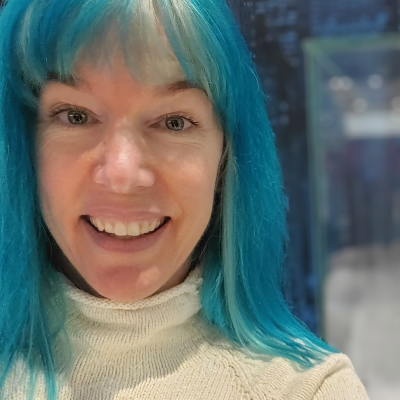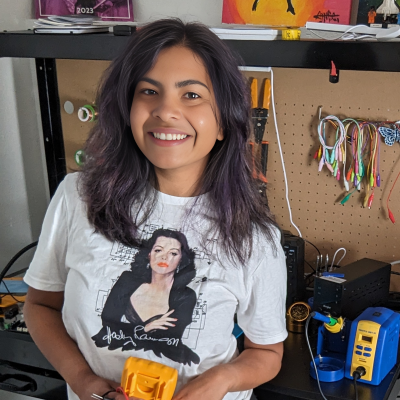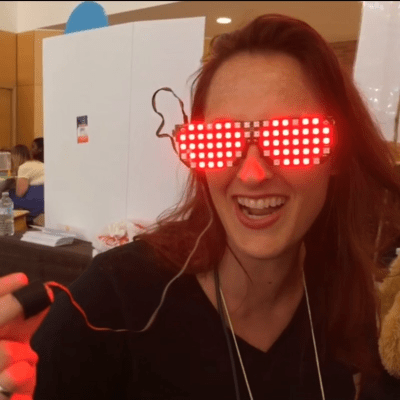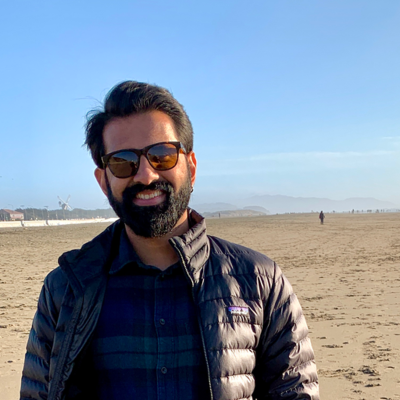Supercon is the Ultimate Hardware Conference and you need to be there! We’ve got a stellar slate of speakers this year — way too many to feature in one post. So here’s your first taste, and a reminder that Supercon will sell out so get your tickets now before it’s too late.
In addition to the full-length talks, we’ve got a series of Lightning Talks, so if you want to share seven minutes’ of insight with everyone there, please register your Lightning Talk idea now.
But Supercon has a lot more than just talks! The badge heavily features Supercon Add-Ons, and we want to see the awesome SAOs you are working on. There will be prizes, and we’ll manufacture four of our favorite designs in small batches for the winners, and make a full run for Hackaday Europe in 2025. Want to know more about SAOs? They’re the ideal starter PCB project.
If you are a fan of interesting display technology, you definitely won’t want to miss Supplyframe’s DesignLab mini-museum of odd and interesting displays.
Of course, there will be workshops. We haven’t announced them yet, but swing by Hackaday on Tuesday the 24th at 8 AM PST for our Gigantic Workshop Reveal and Ticket Sale!
So stay tuned for that announcement, the full details on the badge, and of course the remaining speakers.
See you in November at Supercon!
3D-Printing Packaging for Small Scale Product Deliveries
You’ve successfully brought your product to life and received a hundred orders – congratulations! To ensure your product’s box can withstand rough handling during delivery, you need robust packaging. However, the minimum order for molded packaging inserts is in the thousands of units, and your product’s design is still evolving with each revision, making it difficult for a vendor to create suitable packaging.
With extra filament on hand, why not design and 3D print the packaging yourself? Here is the story of one such journey, along with the lessons learned and the eco-friendly advantages detailed.
Environmentally-Friendly Electronics: Design Principles for Sustainability
In this talk, I will address the pressing issue of electronic waste (e-waste) by introducing Sustainable Design Engineering (SDE) and Design for Environment (DFE) principles. As an electronics designer in climate tech, I’m acutely aware of the exponential growth of e-waste and its environmental impact.
By exploring SDE and DFE, attendees will gain practical insights into integrating environmental considerations into electronics design, fostering a more sustainable approach. Learn how to make a positive impact through eco-conscious design practices in the electronics industry.
FiberCircuits: Integrating Miniature FPCs with MCUs & Sensors INSIDE Fibers!
FiberCircuits explore the miniaturization of electronics to be woven into textiles like fibers. With both scalability and DIY approach in mind, the presentation details design and fabrication techniques for high density PCB challenges, miniature component selection, encapsulation for embedding in fabrics, and (embedded) software tips.
Some applications will also be demonstrated to speculate about a future where electronics devices are seamlessly integrated into our clothing. As a conclusion, some tips about Shenzhen manufacturing and its exploding art scene can be discussed at the end.
Turning (a lot) of talk into action – friends, foes, and forging ahead.
This talk is a journey of experiences, hacks, product developments, companies started, connections and collaborations, and international exhibitions that can all be traced back to my first ever Supercon (2019) and the talk I gave then – on haptics.
I will focus on how Hackaday and the people and the connections I’ve made there that started with that haptics talk and has led to so many interesting projects, new builds, papers, exhibitions, courses. How I also pressed on with haptics and became an external company vendor to an academic institution – contracted for custom builds to research labs. In addition, I will also present on the various large scale digital media exhibitions and international museum and gallery exhibitions we have put on in the past few years, including ones incorporating past Hackaday badges and participants live interactions while at past Supercons piped into the exhibitions themselves.
Every machine can be a radio if you operate it wrong enough
Every wire is an antenna, and software can perform all the operations that would normally be done with dedicated radio hardware. We’ll explore how to leverage every cycle of under-powered microcontrollers to get them to do the work of parts 10x their price.
We’ll go into tricks and tips the methodology of broadcasting 900 MHz LoRa over a mile from a pin operating at under 60 MHz and receiving broadcast radio stations by looking at the noise on an ADC pin of a 25-cent-microcontroller, all without any dedicated radio hardware.
Making E-Ink Go Fast
The talk will go through the design of the Caster project and the background information on the e-ink technology. Caster enables high refresh rate and low latency display on off-the-shelf e-ink panels.
Caster is an open-source low-latency electrophoretics display controller design, offering support for wide range of screens, flexible screen update control, and multiple dithering options. Zhang also recently turned it into a fully-fledged portable e-ink monitor with Type-C and HDMI input which will be discussed as well.
Giving Robotic Friends a Voice: Integrating Local LLMs and Speech Systems Into a Companion Bot
Companion bots in media (e.g. Baymax, R2-D2, K9) often include both high-functioning AI and interactivity with humans. A common form of interaction is voice: the bots can understand human speech and can respond with either synthetic speech or lovable beeps.
Jayy will demonstrate full voice interaction on his Digit companion bot and discuss how this was made possible through the use of a large language model (LLM). He will show how physical movement can be triggered by this voice system to breathe life into the bot’s actions and how such a powerful AI was made portable. Shawn will discuss running Meta’s Llama 3 (8B) model on NVIDIA Jetson Orin hardware to achieve response times in a few seconds. He will also show the hopper-chat system, which wraps the LLM with speech-to-text and text-to-speech modules to construct a full, AI-powered voice assistant.
DIY Atomic Imaging with STM and Active Vibration Cancellation
I will talk about a DIY desktop scanning tunneling microscope (Peregrine) I built, along with a fully analog controller for Peregrine, and finally a feed-forward active cancellation system which allows for atomic resolution even in non-ideal vibration conditions. All parts in the build are made to be accessible for others to replicate and afford.
Peregrine’s head uses a commercial tube scanner, CNC milled aluminum, and plastic 3D printed parts, which total ~$300. A key feature of the head is a very low-noise, high bandwidth transimpedance amplifier, which provides exceptional signal integrity, allowing Peregrine to resolve individual atoms.
Vibrations are often a problem for STMs, Peregrine features a real-time active vibration cancellation system which is implemented using a cheap FPGA and seismometer. This is a good introductory project for those looking to learn more about FPGAs, especially for real-time signal processing.
Designing Intelligent Interfaces for the Future of Renewable Energy
The global shift towards renewable energy sources requires not only new infrastructure for a more flexible and distributed network, but also a collective paradigm shift in understanding who consumes and generates electricity, and how and when they do so.
This talk will show how open source Energy Metering Systems (EMS) can be used to better utilize solar power, and ideas around how interfaces for visualizing and metering electricity can be more user-friendly.
Human Plants: Open-Source Implants You Don’t Need To Recharge
Hobbyist implants such as magnets or RFID chips are cool, but have not progressed much in the past decade. And the main reason is power systems: batteries are big and recharging is a drag. But what if implants and other devices didn’t need to bring their own power, but rather took it from the environment?
I’d like to talk about the modern state of energy harvesting (piezoelectric, solar, capacitive, RF) as it relates to implantable devices, and how I’m working to make open-source platforms which support health tracking and embodied computation in tiny, implantable form factors.
Repurposing ESP32 Based Commercial Products
You want to build out your home automation setup? This talk will teach you how to turn any ESP32 into an Apple HomeKit device and flash custom software onto existing commercial ESP32-based products.
Along the way, I’ll cover classic reverse engineering methods like finding JTAG pins, and development and debugging using open source Tigard JTAG hardware with VisualGDB in Visual Studio.
Finally, I’ll implement more secure cryptographic functions (e.g. post quantum TLS 1.3) with commercial-grade wolfSSL examples, and warn of the dangers with modifications to and use of high voltage devices.
[If you read this far, you probably want tickets. Just sayin’.]




























Speaking of;
“Ayesha Iftiqhar-Wilson
Environmentally-Friendly Electronics: Design Principles for Sustainability”
Maybe SuperCon badges should be designed/built forward looking for enhancements at future SuperCon’s?
Good thing about SAOs — they pair up with next year’s badge as well as this year’s.
But yeah. That’s something that everyone in the badge community thinks about: Designing the badge for the afterlife as well as the during-the-con. But it’s hard to balance.
Do we need a Google account to register for a lightning talk? If not, looks like the linked form is protected.
Ugh. Does Google require you to have an account? We will find a workaround.
If you want, send an e-mail to editor@hackaday.com with “Lightning Talk” in the subject.
We need:
Name/Handle
Talk Title
Topic (Hardware/Software/Electronics/Art/Other)
and Slides in PDF if you’ve got them already. No worries about sending these later/never. :)
I think that also happened at the Hackaday Europe
“Every machine can be a radio if you operate it wrong enough” that is a great title of a talk